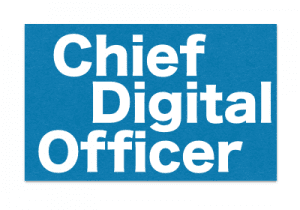How fast is real-time?
How much of what we do should be transparent and shared?
Does the boss need to tweet?
Is it too late to build a community on Facebook?
 For each of these questions, the answer inevitably is: it depends. There is no one answer for every brand. Every year, as companies go to task on their digital transformation agenda, it seems something new comes into the picture that has a habit of turning business rationale upside down. Top marketing executives can be sure of just one thing: nothing is fixed in stone. Whether it is the brand playbook, social media policies or digital technologies, everything seems to be in need of updating and realigning on an ongoing basis. In the case of the questions executives must be asking themselves, these too need to constantly evolve as the benchmarks improve and the choices change.
For each of these questions, the answer inevitably is: it depends. There is no one answer for every brand. Every year, as companies go to task on their digital transformation agenda, it seems something new comes into the picture that has a habit of turning business rationale upside down. Top marketing executives can be sure of just one thing: nothing is fixed in stone. Whether it is the brand playbook, social media policies or digital technologies, everything seems to be in need of updating and realigning on an ongoing basis. In the case of the questions executives must be asking themselves, these too need to constantly evolve as the benchmarks improve and the choices change.
Digital marketing transformation
It is no longer about if we should be doing digital marketing, but how, when and how much. Since the number of brands using digital platforms and tools has swelled, the big challenge for marketers is now about cutting through the noise. It is no longer satisfactory to create good content, even great content. The issue is making your message heard. It is probable that distribution of content is now the major battleground online.
Purpose behind digital transformation
In this regard, as brands and their agencies of record scramble to create awesome content and push out their stories, I see three major challenges for leadership and profitable long-term brand building:
- Does your brand have a higher federating purpose that connects with customers and all key stakeholders (including employees)?
- Does the CEO live and breathe the brand?
- Does your personnel believe in your purpose?
Digital is everyone’s responsibility
The digital transformation ‘challenge’ that many companies are undergoing reminds me of the questions of diversity and sustainable development. Business executives, first, looked to ‘solve’ these issues with band aids. In the case of diversity, the C-suite was often prone to nominating a woman or ethnically different person to head the “Diversity” program. Similarly, for sustainable development, an enthusiastic “greeny” might be given the role of driving the program. And, both candidates would more often than not fail cruelly in their mission. Why? This is because it is more a question of mindset and general corporate culture. Turning off lights, saving paper or sorting trash must only be everyone’s responsibility. Welcoming diverse backgrounds and opinions must go on throughout the day, everywhere; not just when the boss is looking. Embracing change, recognizing differences and accepting funny accents becomes everyone’s remit.
 In the same sense, nominating a geek or digitally savvy individual to be Chief Digital Officer is far from sufficient to drive a “digital transformation.” Digital is, ultimately, all-inclusive. It permeates all areas of the business, inside and out. And, for everyone to be motivated and mobilized to embrace the change, it truly helps when the individuals involved believe why it’s important. In other words, that they subscribe to the brand’s purpose.
In the same sense, nominating a geek or digitally savvy individual to be Chief Digital Officer is far from sufficient to drive a “digital transformation.” Digital is, ultimately, all-inclusive. It permeates all areas of the business, inside and out. And, for everyone to be motivated and mobilized to embrace the change, it truly helps when the individuals involved believe why it’s important. In other words, that they subscribe to the brand’s purpose.
A pragmatic approach
Of course, digital is a nebulous and vast term. Viewed as whole, as I wrote in an article for CMO.com, the digital transformation journey can take on mountain-like proportions, so it is important to prioritize in a strategic manner the path to choose up that mountain.
Looking for shortcuts?
If there were any easy shortcuts, we would all know about it. There are certainly ways to accelerate the program (but none of these is necessarily possible or even desirable):
- The CEO personally drives the agenda
- Be in a business that has no other option (e.g. facing major disruption or bankruptcy)
- Get thrown into a crisis situation (an attack on social media, a cyber attack…)
The importance of customer centricity
For the rest of us, it’s generally a slow process. There is, however, one key to making the journey as short as possible: make customer centricity a de facto reality. If digital transformation is considered as a program to help create or promote a sustainably profitable business, being customer centric is its magic sauce.{Tweet this!} Anyone in touch with the customer – whether it is customer service, store personnel, the persons in charge of social media or the salesperson on the field – knows this. A customer relationship program driven by a non-customer centric organization inevitably wreaks of pushy outbound messages. Ultimately, then, for the digital transformation agenda to succeed, a company needs three ingredients:
- The role of digital must be articulated around and in support of the key strategic imperatives of the company. {Tweet this!}
- There is a top down necessity that requires that the CEO must incarnate the attitude and model the behavior that will help encourage openness to the new digital ways and means – including learning how to test and accept failure. {Tweet this!}
- From a brand perspective, the content being created must consistently resonate with the employees and key stakeholders as much as with the customer base. {Tweet this!}
Your thoughts and reactions are welcome!












Trackbacks/Pingbacks